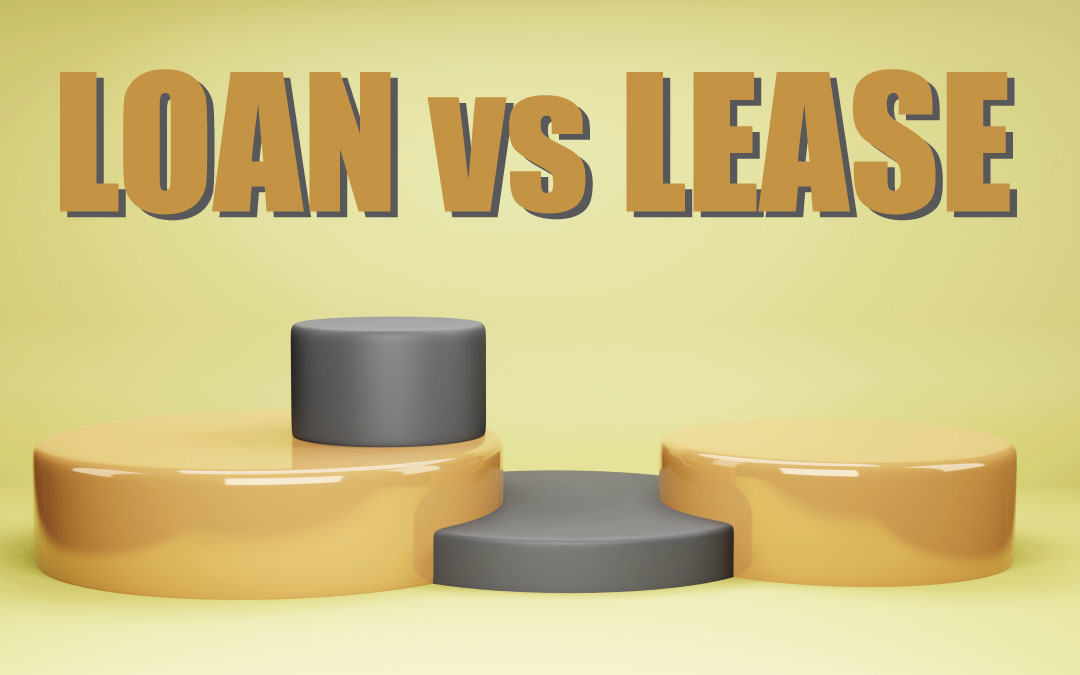When it comes to financing essential business equipment, it’s natural to focus on the hard costs, such as the purchase price, interest rate and repayment terms. However, there is another type of cost that is just as important to consider, yet often overlooked: the soft costs of financing business equipment.
Don’t let the word “soft” fool you. Soft costs can add up quickly and can significantly impact the overall cost of financing your equipment. To avoid surprises, it’s a good idea to familiarize yourself with what the soft costs of financing essential business equipment are, why they are important and how to manage them.
What Are Soft Costs?
Soft costs are indirect costs associated with acquiring and financing essential business equipment. Depending on the type of equipment you’re financing, they can include, but aren’t limited to the following:
- Legal and accounting fees
- Appraisal fees
- Insurance costs
- Installation and setup
- Operator training/certification
- Dealer fees
- Transportation and delivery fees
- Taxes
- Maintenance and repairs
- Warranties
Unlike hard costs, which are directly tied to the equipment itself, soft costs are not easily quantifiable, and they can vary greatly depending on the financing option you choose.
Why Soft Costs Are Important
Soft costs can be significant, and they can significantly impact the overall cost of financing your equipment. For example, if you choose to finance your equipment through a lease, you may be required to pay appraisal fees and insurance costs, which can add several thousand dollars to the overall cost.
For example, imagine you’re buying a back hoe for your heavy construction company or you’re a physician purchasing an MRI, the soft costs for delivery, installation, transportation, etc. can run upwards of $6,000 to $7,000. When the purpose of financing equipment is to avoid a large capital outlay, these soft costs have a serious financial impact.
In addition to the direct cost impact, soft costs can also impact the timing of your equipment financing. For example, if you need to obtain an appraisal or complete legal paperwork before you can finance your equipment, this can delay the process, which can be costly if you need the equipment to be operational as soon as possible.
How to Manage Soft Costs
The key to managing soft costs is to understand what they are and what they involve. To start, do your research and compare the different financing options available to you. This will help you understand the types of soft costs associated with each option, as well as the costs of financing your equipment overall.
Next, you should work with your equipment vendor and financing provider to identify the soft costs that will be required for your financing. This will give you an accurate picture of the costs involved, and it will help you make informed decisions about how to finance your equipment.
Lenders, like Global Financial & Leasing Services, LLC (GFLS), can include up to 25% of soft costs in the financing. Lenders cannot recoup soft costs. Meaning, if a business owner defaults on the loan, lenders cannot recoup the money spent on transportation, installation, operator training, taxes, and such. Therefore, the exact percent your lender will finance depends on a few factors, including:
- Your credit rating
- Type of equipment
LEARN MORE: Can I Finance Equipment with a 640 Credit Score?
Soft Costs Can Add Up to Hard Consequences, Making It Critical to Partner with an Upfront Lender
The soft costs of financing essential business equipment are often overlooked, but they can have a significant impact on the overall cost of financing your equipment. To manage these costs, you need to understand what they are, compare different financing options and consider alternative financing options like those available through GFLS. By taking these steps, you can ensure that you are financing your equipment in the most cost-effective way possible, which will help you achieve your business goals and grow your business.
GFLS provides equipment financing solutions with no hard cap on the amount for a wide range of companies and a wide range of credits with no minimum FICO score requirement. Ready to learn more? Let’s talk about the possibilities. Or, get started today by filling out an online application.




 For many people, the new year is a time for setting personal resolutions. Yet, statistics indicate most people let theirs slide by the end of February. For business owners, it’s not only the start of a new year, it’s first quarter—a time to kick off year-long sales goals, new initiatives and grow your company. Business “resolutions” aren’t as easy to let slip because there are livelihoods, including yours, counting on your follow-through and success.
For many people, the new year is a time for setting personal resolutions. Yet, statistics indicate most people let theirs slide by the end of February. For business owners, it’s not only the start of a new year, it’s first quarter—a time to kick off year-long sales goals, new initiatives and grow your company. Business “resolutions” aren’t as easy to let slip because there are livelihoods, including yours, counting on your follow-through and success.


 The team at Global Financial & Leasing Services (GFLS) is honored to announce the
The team at Global Financial & Leasing Services (GFLS) is honored to announce the 
 Your construction company needs heavy equipment. Maybe you’re expanding, want the opportunity to bid a certain project, or intend to competitively position your company for earning government contracts associated with the
Your construction company needs heavy equipment. Maybe you’re expanding, want the opportunity to bid a certain project, or intend to competitively position your company for earning government contracts associated with the 
 Buying essential business equipment can be a very expensive endeavor. More often than not, small business owners cannot afford to purchase the equipment outright. Even when they can, rarely do they feel comfortable draining their cash reserves. Whether you can afford to purchase equipment outright or not, oftentimes the smart choice is to finance it.
Buying essential business equipment can be a very expensive endeavor. More often than not, small business owners cannot afford to purchase the equipment outright. Even when they can, rarely do they feel comfortable draining their cash reserves. Whether you can afford to purchase equipment outright or not, oftentimes the smart choice is to finance it.
 With so many financing options available from a variety of lending sources today, it’s easy to be overwhelmed by choices, especially considering you’re making a serious financial commitment. While you’re weighing choices, your business lacks the equipment needed to launch or grow. If you’ve been trying to decide whether to rent, finance or purchase outright the essential business equipment your company needs, we hope this article makes the decision a lot easier for you.
With so many financing options available from a variety of lending sources today, it’s easy to be overwhelmed by choices, especially considering you’re making a serious financial commitment. While you’re weighing choices, your business lacks the equipment needed to launch or grow. If you’ve been trying to decide whether to rent, finance or purchase outright the essential business equipment your company needs, we hope this article makes the decision a lot easier for you.